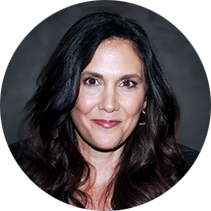Multidisciplinary teams (MDT) provide actionable and useful insights to their organizations. Each individual on an MDT brings their expertise to the table, influencing better decision-making that brings organization-wide benefits.
According to a Bloomberg Law survey, 82% of lawyers surveyed believe MDTs can be made up only of lawyers. Lawyers feel that these MDTs should be composed of lawyers alone – a view could potentially hamper growth and progress.
What is a Multidisciplinary Team?
The think tank of an organization, an MDT brings experts from varied backgrounds together to merge their unique problem-solving skills and business inputs. This creates solutions for existing business issues, irons out any kinks in governance, and provides a culture that offers optimal services and products organization-wide and to the end consumer.
Despite multidisciplinary teams being a new prospect in the legal profession, it’s clear that having lawyers involved in such collaborations can be beneficial for client relationships and problem-solving perspectives.
Centre for Legal Innovation
Incorporating Non-lawyers on MDTs
Organizations need to pool in the expertise of the management, finance departments, and human resources while creating diverse MDTs. This expands horizons to include a wider range of input and feedback for business making decisions and strategic planning.
According to an article by the Centre for Legal Innovation, even though MDTs are new to the world of law, teams with lawyers and non-lawyer experts are beneficial “for client relationships and problem-solving perspectives”. A team built on the strengths of experts from various fields in addition to law pools in their problem-solving skills to target specific tasks. These issues can range from business making decisions, to vendor management and beyond.
Why Do You Need a Multidisciplinary Team?
Teams with only attorneys on board do not have what it takes to offer a holistic solution to clients or an organization. A multidisciplinary team of lawyers, maybe the tech team, and paralegals are capable of providing a solution with a 360° answer that solves challenges from every angle possible.
With an MDT, lawyers can collaborate with other individuals across the organization to deliver high-quality and efficient solutions that align with their company’s business goals. At the end of the day, the legal department can function best when it is part of a larger unit with skilled professionals from different departments.
Who can be on an MDT?
- Designers
- Technology engineers
- Business analysts
- Finance specialists
- ALSP experts
MDTs do not need to be restricted to just include non-lawyers outside of the legal field, however. Companies can choose to utilize the expertise of alternative legal service providers (ALSPs). ALSPs have a working understanding of the needs of lawyers, through the lens of non-lawyers and other lawyers alike. They can provide valuable insights that can benefit the way legal departments conduct business and legal operations.
A comprehensive problem-solving MDT task force should include non-lawyer experts. An all-lawyer MDT restricts viewpoints and keeps them to a legal-only lens. With an MDT that has lawyers and non-lawyer experts on board, organizations can troubleshoot problems faster, brainstorm solutions, and make contingency plans before they’re needed.






